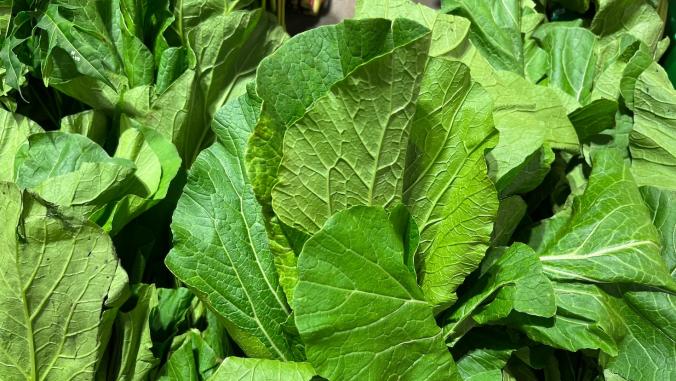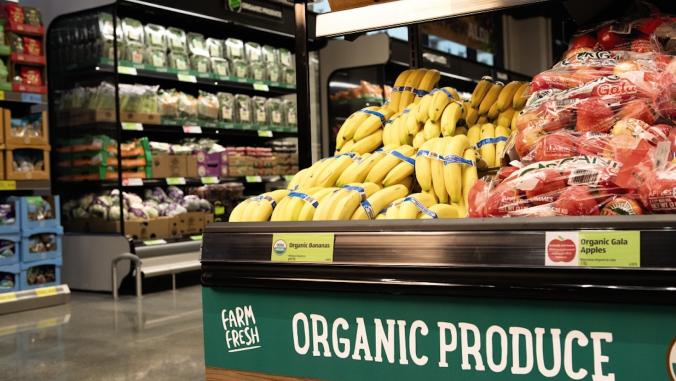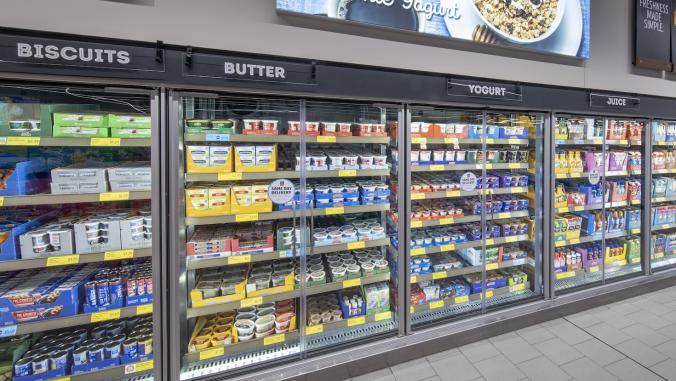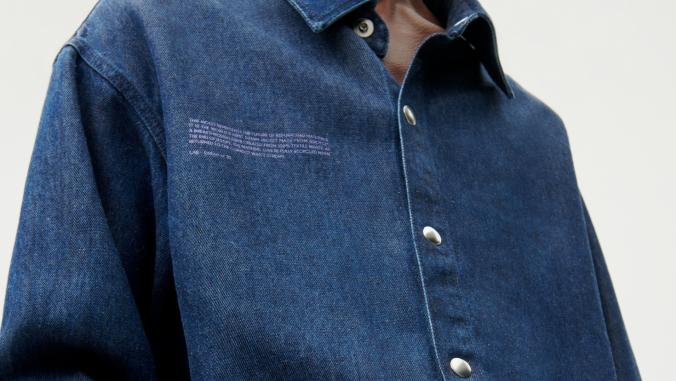Panera was the first national fast-food chain to label the calorie counts of its menu, and now it’s the first to tag its food with its climate impact. Just as the company served as a case study to the industry that revealing calories wouldn’t kill sales, Panera hopes it can do the same for climate action.
"We took that leap of faith [with calories] because we knew that we couldn’t wait for regulatory action," said Sara Burnett, vice president of food value, sustainability and public affairs at Panera. "Being transparent and open with a guest is always going to win in the long run because it builds trust with that guest. It didn’t negatively impact sales, but it did build confidence and win trust with our consumer."
Working with the World Resources Institute, Panera features a "Cool Food Meal" badge on 55 percent of its offerings. These meals are made up of ingredients that emit less than 5.38 kilograms of carbon dioxide per meal, the cutoff developed by WRI.
Rival restaurant company Chipotle has announced a similar initiative, Real Foodprint, that compares ingredients sustainably sourced by Chipotle to their traditional counterparts. HowGood, an independent research company partnering with Chipotle, calculated that Chiptole’s carne asada emits 181.2 less carbon dioxide than the industry average steaks and improves 11.6 square feet of soil health. That's just one example.
Individual climate action can feel overwhelming. Chipotle and Panera are trying to make it just another option on the menu.
"Let’s actually try to figure out how we take this global issue that is literally at the earth level and bring it down to your plate," Burnett said.
When developing the Cool Food Meal badge, WRI came up with the 5.38 kg emissions cutoff by analyzing the average emissions of a daily diet in 2015 and projecting how much each person would need to decrease that amount to meet the climate goals set by the Paris Agreement by 2030. Its calculation suggested that each person would need to decrease the emissions from their daily diet by 38 percent.
Let’s actually try to figure out how we take this global issue that is literally at the earth level and bring it down to your plate.
"If you look at [Panera’s] menu, the majority of their dishes are what we call plant-rich," said Daniel Vennard, director of sustainable diets and behavior change at WRI. "It’s mainly plants with a little bit of meat as a condiment. [Panera’s] menu is well-suited to this agenda."
It wasn’t just vegan soups and salads that made the cutoff. Panera’s popular Broccoli Cheddar Soup came out to 3.65 kilograms of CO2 emitted per meal. And the Chipotle Chicken Avocado Melt produced 5.25 kilograms of CO2, according to the company.
"We were really excited about this because people can eat the things that they crave and still have a positive impact," Burnett said.
WRI used the open-source University of Oxford Climate Change Food Calculator and its data to calculate the average emissions for each ingredient. According to Vennard, the calculator takes into account the location of a supplier to better estimate the emissions. While the data does factor in transportation emissions, more important are the efficiency and greenness of the production systems which can vary enormously from country to country, he said.
For example, if a country makes fertilizer with an energy system that is predominantly coal-based versus one more focused on renewable or nuclear power, as in parts of Europe, that will drastically affect the emissions associated with an ingredient. The data isn’t specific to Panera’s individual suppliers and instead focuses on average emissions across a certain region of suppliers. And while Panera doesn’t have plans to change any of its suppliers based on this analysis, Burnett said Panera evaluates its suppliers and the sustainability of their business practices heavily during the procurement process.
WRI’s overall methodology for creating the Cool Food Meal badge is also open-sourced and has been peer reviewed. These peer reviewers are there to help assuage concerns over greenwashing, making sure the standard isn’t too low or too easy to hit.
"[For] any labels that come out, it’s very important that these aren’t black boxes," Vennard said.
While the nitty-gritty details are available to anyone, the goal was to create a label that would educate consumers at a glance. Instead of listing the exact amount of emissions for each item as most restaurants do with calories, the badge serves as an easy way to recognize "climate-friendly" options from the rest. You can find the exact emissions for each ingredient online, but the in-store menu just features the Cool Food Meal badge.
"We sense that metrics like these are hard to understand," Vennard said. "You need a lot of implicit knowledge about it, and probably need a master's degree in climate science. We came down on the side of ‘Let’s make something that everyone can understand.’"
WRI and Panera are using behavioral tricks to get people to choose these dishes, by using the badge to intentionally highlight items that are good for the environment. According to Burnett, the goal is to encourage customers to make better choices instead of shaming them for bad ones.
A lot of behavioral research went into just the design of the badge itself. A 2016 study showed that putting smiley faces next to items can change the number of fruits and vegetables that kids eat and get them to choose a better option. WRI extended that theory to its green smiley face on the Cool Food logo hoping to encourage adult consumers to do the same.
"We’re conscious that often labeling but just generally climate can be about guilt, and it can be quite negative," Vennard said. "We wanted to make this feel like an upbeat, positive social program."






